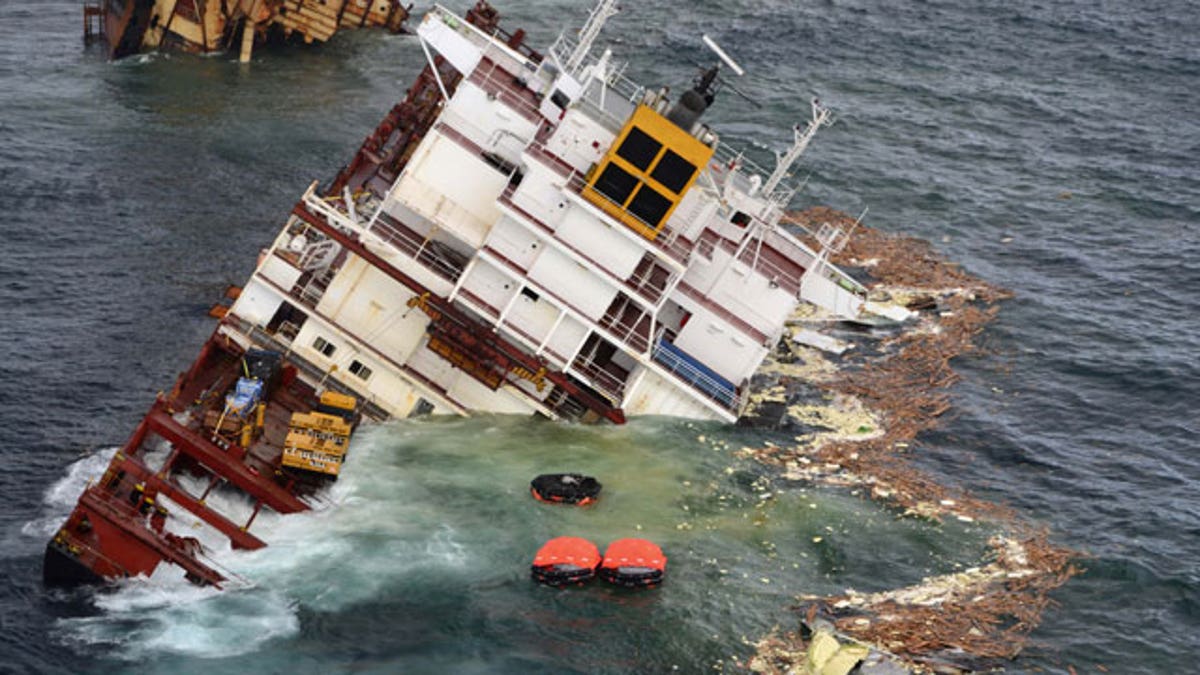
January 10, 2012: In this photo provided by Maritime New Zealand, half of the cargo ship Rena is partially submerged on a reef near Tauranga, New Zealand. (AP)
WELLINGTON, New Zealand – One half of a cargo ship that ran aground on a New Zealand reef three months ago was sinking into the ocean Tuesday.
Maritime New Zealand spokesman James Sygrove told The Associated Press that the stern section of the vessel Rena began slipping from the Astrolabe reef at about 9 a.m. New Zealand time and three hours later was about three-quarters submerged.
"The front 30 meters (100 feet) is still above the waterline, but the back section and the bridge are all under the water," he said.
Sygrove said the bow section of the boat remains wedged on the reef. He said there is plenty of wood, plastic and other debris floating around the sinking stern section.
"It's quite a fluid situation," he said, adding that authorities remain unsure of what will happen next.
The 774-foot (236-meter) vessel split in two over the weekend amid heavy seas. It has been battered on the reef near the North Island port of Tauranga since it ran aground Oct. 5.
About 150 cargo containers have spilled into the sea since the weekend, with more than 800 still aboard. Many more containers are expected to fall off as the stern sinks.
In the days after it ran aground, the Rena spilled about 400 tons of fuel oil, fouling pristine beaches and killing thousands of seabirds in what has been labeled the country's worst maritime environmental disaster.
Maritime New Zealand estimates that less than 100 tons of oil remains on the ship after salvage crews managed to remove much of the remaining oil and nearly 400 containers. However, it was a slow process removing containers and hundreds were still aboard when it split apart.
New Zealand police closed access to one beach Monday after some people were seen scavenging bags of powdered milk that washed ashore. Authorities warned the food may be unsafe.
More than 30 containers from the ship and plenty of loose debris has washed up at local beaches since the Rena split apart, and authorities have been working to tow other containers out to sea to prevent more from coming ashore. Salvage crews have attached beacons and buoys to some containers so they can be more easily recovered later.
